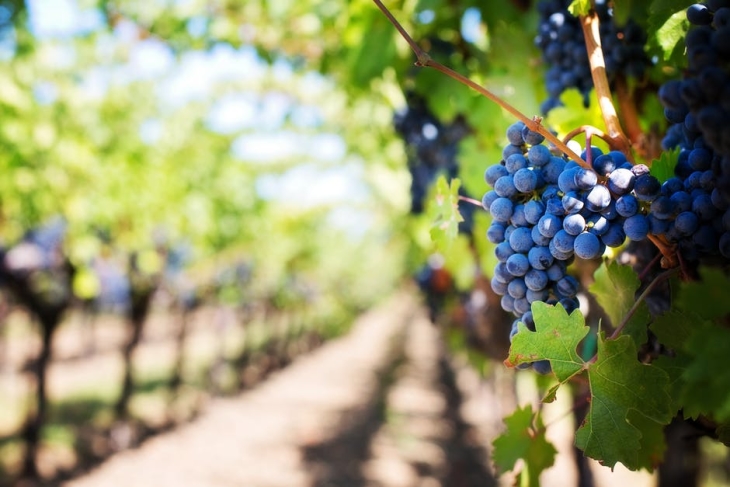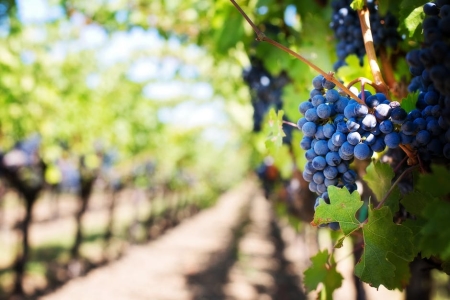Bordeaux is potentially the most famous wine region in the world, producing some of the most expensive red wines and botrytized sweet white wines on the planet. Bordeaux is also well known for its vintage variation, the difference in the quality of wines from year to year based on the weather during the growing season that year.
The Impact of Weather on Wine
Due to its latitude and proximity to the Atlantic Ocean, Bordeaux can have perfect warm grape-growing conditions or be subjected to cool temperatures, rain, and even hail during the summer growing season. Cool, wet conditions can slow the ripening of red grapes and promote disease pressure (fungus, mildew, etc.), while hail can damage leaves, fruit, or even the vines themselves. Unripe grapes lead to low alcohol, tart wines with green notes (green bell pepper), light color, and rough undeveloped tannins, which are unpleasant and unfit for aging.
The best years are characterized by warm, dry weather during the growing season. These conditions promote the ripening of grapes and the development of complex flavors, deep dark color, fine integrated tannins, and 13%+ alcohol levels. Bordeaux is a large region, so some appellations can have pristine weather and great years while others suffer from mildew or hail, decimating their crop and potentially ruining the wines. Another variable in the vintage quality calculation is that grape varietals ripen at different times. Therefore, regions heavily planted with Merlot (which ripens early), like Pomerol or St. Emilion, are protected from late-season inclement weather. In contrast, Left Bank Cabernet-heavy appellations (cabernet ripens late) rely on optimum conditions later in the season to produce high-quality wines.
Legendary Status
The 1996 and 1998 vintages were prime examples of the Left Bank and Right Bank vintages. 1996 was considered an astounding vintage for Cabernet-based Left Bank wines, with quality wines also being produced on the Right Bank. 1998, on the other hand, was a spectacular vintage for Merlot-based Right bank wines, with select Left Bank wines only now being highly regarded after time to develop in bottle. Below, we look at the specific weather conditions that shaped '96 and '98 into the exceptional vintages still revered 20+ years later.
The stunning 1996 vintage has been referred to as "legendary" by Wine searcher and as "one of the great post-war (WWII) vintages for Médoc Cabernet-based wines" by Berry Bros. & Rudd. The growing season saw generally warm dry weather through June and July before a cooler, mildly wet August gave way to a glorious September with warm, dry days and cool nights, ripening the grapes while still preserving the acidity in the grapes. To be featured in this collection, we have hand-selected two of the most heralded First-Growth Left Bank wines from 1996, Château Margaux (100 pts) and Château Latour (99 pts).
1998 saw quality growing conditions in May and June, giving way to excessive heat in July and August and wrapping up with rain and inclement conditions towards the end of September. The rain didn't impact Merlot crops at the end of September, as most vineyards were harvested before the weather arrived. The Merlot that was picked was outstanding, leading Berry Bros. & Rudd to call 1998 - "The greatest vintage for Merlot-dominated wines since 1990 and the quality of the St-Emilions and Pomerols is outstanding." The late-ripening Cabernet crops on the Left Bank weren't as fortunate as the rain negatively impacted many producers. There were a few Left-Bank wines that came out alright, leading Wine Searcher to note "as time has passed the Left Bank wines of the Médoc have increasingly opened up, and some have revealed to be extremely good...some Pessac-Léognan wines were very impressive." After extensive research and diligence with our Wine Advisory Board and trade partners, we identified Château Cheval Blanc from St. Emilion and First-Growth Château Haut-Brion from Pessac-Léognan as the best current opportunities from the 1998 vintage.
Bordeaux wines have long been the benchmark for investment-grade wines, and we are excited to offer our first collection featuring First-Growth Bordeaux and Premier Grand Cru Classé' A' wines.


